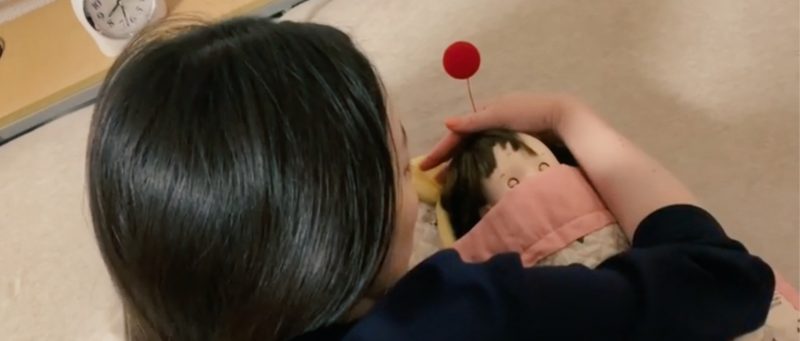Working in Tokyo, bedding down baby remotely and searching for next sperm
Posted on November 25, 2021
November 25, 2050
My name is Hana, 28 years old. I work in an HR company in Tokyo. 2 years ago, I got 1st baby and am having a great time with both work and life with my husband.
As far as I heard, many women quit their jobs because of work-life balance when they have their first babies in the past, about 2020.[1][2] One of the reasons was the lack of daycare centers[3]. Even when they got a post of daycare, I heard that it was stressful. It was nervous to leave early from their office to pick their children up to the daycare because of peer pressure. To make matters worse, merely about 12% of men took paid leave after they had babies[4], burdening women to take care of children. Many women couldn’t take enough time to take care of themself. That made them severely depressed at that time.
Now, the burden of childcare has gone because all parents leave our 1-year old children to a new ChildHouse run by the government until they graduate from high school. The houses are located in the countryside of each prefecture and children live together without their parents. Even living far away, I meet my kid every day because my living room is connected with her room in ChildHouse with the Telexistence technology[5]. There is the Geminoid[6] of myself in her room and the Geminoid of herself also in my living room alternately. Geminoid is a humanoid robot that copies my body in detail and works synchronously with me using sensing technology. So our rooms are remotely connected, and we can communicate with each other physically, unlike old technology such as video calls and VR. And we can even eat the same dinner using the food printing technology based on Sushi teleportation.[7]
Each ChildHouse has a library, study room, playing room, sports field, and various activities that our children learn and enjoy[description]. Childcare and educational professionals stay there 24/7, and children learn both academic and socializing skills. Therefore, education gaps that used to exist based on income have disappeared. Average children’s intellectual ability score is rapidly increasing and, children’s regular and healthy lifestyle makes them fit, eliminating child obesity.
Thanks to ChildHouse, our lives became easier after we left our kid in ChildHouse last year. I can enjoy much more time with my husband to go to restaurants and bars now, and we go to ChildHouse to meet her. I heard that Japan’s birth rate is rapidly improving because it has reduced child-raising costs. And some of my friends decided not to get married when they had babies. We can choose from various forms of family.
These days, I discuss with my husband whether to use egg and sperm freezing for the future family plan. Some TV shows say genetic information is the next investment to make children successful. This is because it is well known that genetic and environmental factors influence human ability[8] but now children grow up in an equal educational environment. My friend said that she chose a well-known baseball player’s sperm this time. I wonder if I should sign up with sperm banks for our next child…
–HK

Geminoid[Left:Human, Right:Android] *http://hil.atr.jp/projects/kibans/resources.html
1. “Annual Report on the Japanese Economy and Public Finance 2020: 3-2 Current Situation and Issue about Women’s Employment, Matrimony and childbirth.” Cabinet Office, Government of Japan, November 6, 2020 https://www5.cao.go.jp/j-j/wp/wp-je20/h03-02.html.
2. “Survey on Work-life Balance 2018,” Mitsubishi UFJ Research and Consulting, February 2019, https://www.mhlw.go.jp/content/11900000/000534370.pdf
3. “Summary of Day-care Situation” Ministry of Health, Labour and Welfare of Japan, September 4, 2020, https://www.mhlw.go.jp/content/11922000/000678692.pdf
4. “Basic Survey of Gender Equality in Employment Management in 2020,” Ministry of Health, Labour and Welfare of Japan, July 30, 2021 https://www.mhlw.go.jp/toukei/list/dl/71-r02/07.pdf
5.Tachi, Susumu. Telexistence. In Virtual Realities (pp. 229-259). Springer, Cham.
6. Nishio, Shuichi, Hiroshi Ishiguro and Norihiro Hagita. 2007. “Geminoid: Teleoperated android of an existing person.” Humanoid robots: New developments, 14, 343-352.
7. “Sushi Teleportation,” OpenMeals, Accessed November 22, 2021. https://www.open-meals.com/sushiteleportation/index_e.html
8. Wright , Margie, Eco De Geus, Juko Ando, Michelle Luciano, Danielle Posthuma, and Yutaka Ono. (2001). Genetics of Cognition: Outline of a Collaborative Twin Study. Twin Research, 4(1), 48-56.